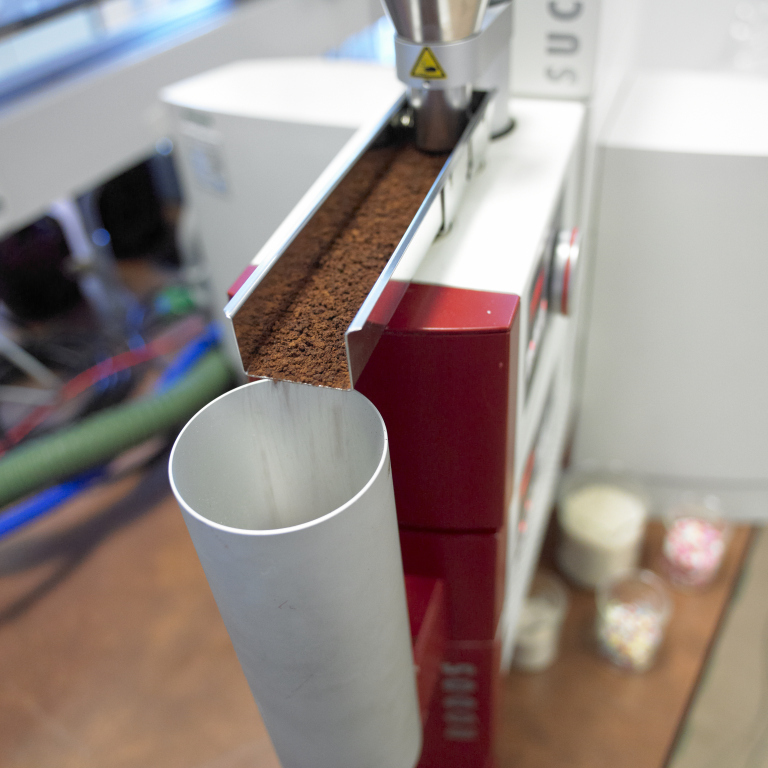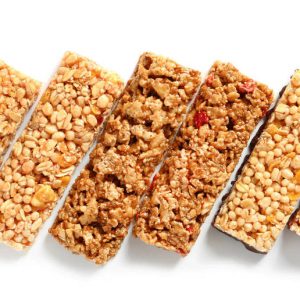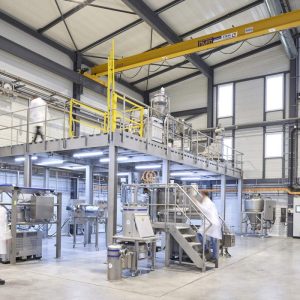Why size (and shape) really does matter

 In the food and drink industry, the physical properties of the individual components of food and drink affect the taste, texture, appearance, stability, processing behaviour and functionality of the final product.
In the food and drink industry, the physical properties of the individual components of food and drink affect the taste, texture, appearance, stability, processing behaviour and functionality of the final product.
Many food and beverages and their ingredients exist in particulate form, ranging from powders to emulsions, suspensions and pellets. The measurement of key physical properties such as particle size and distribution is therefore of great importance in assuring consistently safe and high quality food and drink products.
Shaping up
For many years, the food and drink industry has relied on traditional sieving methods to determine particle size. While this method remains popular and it is still widely used to determine the size distribution of food particles, there is an increasing awareness and acceptance that their shape also has a significant bearing on food products’ characteristics.
The shape of particles not only affects the mouthfeel and taste of food but also affects how certain products behave during processing. The bulk density, compressibility and ‘flowability’ of raw materials are highly dependent on particle shape as well as size. For example, how a powdered ingredient, such as flour, flows or how much water is absorbed during the mixing of a dough or a batter can have an impact on downstream processing. This could potentially lead to interruptions in production or technical issues with equipment if, for example, a dough or emulsion clogs up machinery or pipes.
It is therefore vital that food manufacturers have a greater understanding of the influence of both particle shape and size on ingredient properties in order to optimise performance, and ensure quality control and manufacturing process specifications.
Latest tools
Proper particle characterisation and analysis requires accurate and reliable analytical instrumentation. The challenge for food and drink manufacturers is to find the best techniques and technologies available to determine particle shape and size as accurately as possible.
There are various methods of measurements food and drink manufacturers have at their disposal. However, there are some issues with these techniques. For example, laser diffraction, measures the angular variation in intensity of light scattered as a laser beam passes through a dispersed particulate sample.
While this can determine the size of particles ranging from hundreds of nanometres up to several millimetres in size, it assumes all particles are spherical, which is certainly not always the case. This makes accurately determining the size of irregularly shaped particles impossible.
Campden BRI, as part of its latest installation of £1.4 million (€1.6m) worth of analytical and processing equipment, has recently installed a brand new, leading-edge particle analyser that can accurately measure the shape and size distribution of particles from two microns (µm) up to 30 millimetres (mm).
How it works
Dynamic image analysis using a pulsed laser allows fast quantification of particle shape and size distribution. Due to the unique way in which the machine operates, scientists at Campden BRI can now analyse the shape of particles, as well as their size.
Dispersion is key to the way the system works because it allows a large number of particles to be imaged in a short space of time without any ‘overlaps’ occurring.
The particle shape and size analyser uses an extremely short exposure time. It captures up to 450 images per second to allow fast methods of dispersion to be used while still providing clear images from particles travelling at high speeds, guaranteeing proper dispersion of agglomerated, fine and cohesive powders.
As images of the particles are captured in freefall, their orientations are completely random; this provides a much more accurate representation of particle size than can be obtained by static image analysis systems, yet the speed at which images are captured means particle edges are sharp and are independent of their position in the measuring zone.
Particle sizes between 2µm and 30mm can be measured and primary measurement data can be evaluated in individually definable formats. Rapid image capture, allowing the recording of up to 450 images per second, ensures high statistical security of measurement results in short analysis time.
Due to the equipment’s range, particle size analysis can be performed on a wide range of food products from very fine powders to larger objects such as coffee granules, pulses or cereal grains. Indeed, researchers at Campden BRI have already been analysing a range of foodstuffs including sugar, flour, cereals and products with several components, such as instant hot chocolate comprising cocoa, milk powder and sugar.
Large particles can be dispersed using a vibratory feeder and gravity disperser allowing particles to be imaged with little or no overlap, whereas small particles can be dispersed under a compressed air system where a short exposure time provides clear images from particles travelling at high speeds.
The pressure used in the system can be adjusted for agglomerates in order to look at the whole particle or, by introducing more energy, breaking it up into its component parts. In contrast to other approaches, the particles are not biased by the orientation in which they are presented, giving a better overall representation of the shape and size of the particles.
The analyser also accommodates measurements of particle size in wet systems. This not only means that particles suspended in liquids can be measured, but also bubbles and droplets in the liquid are quantifiable. Liquid emulsions and slurries can all be analysed.
Particle shape can be measured by considering two or more measures of particle size and studying the ratio between them.
This provides much more information about the particles’ properties and from this, inferences can be made about the properties of the substance. Different particle shapes can have an impact by, for example, altering the surface area to volume ratio of the particle.
This information complements particle size information to provide a lot more detail about the particles in question and allows a better understanding of how the size and shape of the particles contribute to specific qualities in the end product.
Applying the science
Quality control
There is a range of practical applications for the particle analyser within the food and drink industry. One key benefit is how it can help with quality control, assuring consistency and safety at all stages of the manufacturing process.
Food manufacturers can submit samples of finished products taken from different batches for analysis. While manufacturers would expect the products to be identical, there may be minor differences that have a bearing on product quality.
Individual ingredients can also be analysed to see if they have an impact on overall quality and consistency. For example, in more complex, multi-component products, such as ‘three-in-1’ coffee drinks, consisting of a number of product ingredients such as coffee granules, milk powder and sugar, which all have different particle shapes and sizes, the analyser can provide invaluable data to help with such quality control measures.
Product reformulation and development
Data from the particle analyser can also be used in product reformulation and new product development, helping manufacturers with ingredients specifications.
For example, the shape and size of sugar is of great importance in determining its usefulness in food formulations, and the quality attributes and acceptability of foods containing these components.
Recent Campden BRI research has involved the analysis of the particle size distributions in brown and wholemeal flour. The particle analyser has proved highly effective at identifying the differences between flours prepared by different processes.
Potential baking industry applications could be looking at the differences between the sizes of bran particles in different types of flour and identifying which flours might perform best in their process.
The analyser can also be used effectively in emulsions and liquids. Analysis of cream samples has been successfully undertaken at Campden BRI. The findings have significant potential for the food and drink sector, as fat globule size has a major influence on the functional properties of cream and therefore the way it can be processed. There is also the capacity to investigate the effect of different processing regimes on globule size distribution.
Other uses
The range and potential applications of the particle analyser, from powders and mixtures to slurries and emulsions, is wide and varied. Researchers are investigating the application of particle shape and size analysis to other non-food applications.
In addition, there may be untried or untested uses for the analyser which could be explored and investigated further. Interested parties are invited to approach Campden BRI with ideas for applications for their products and potential exploratory research work.






